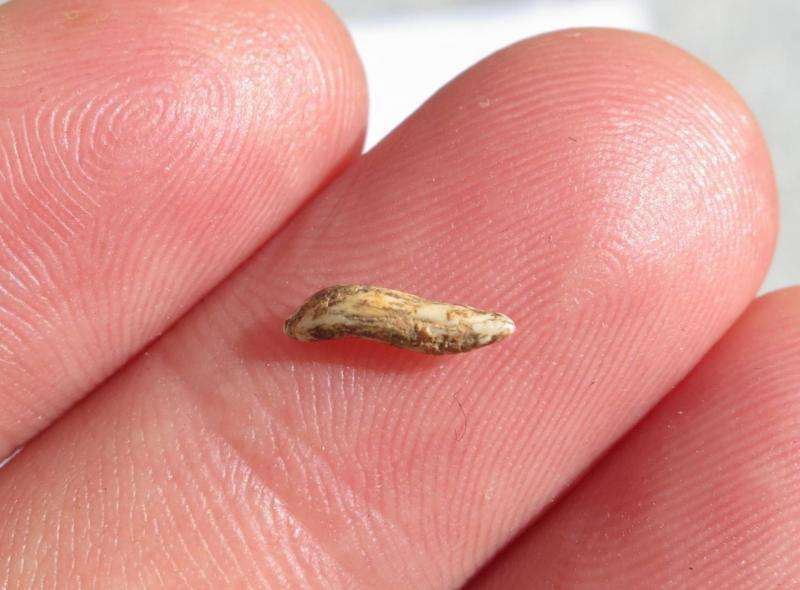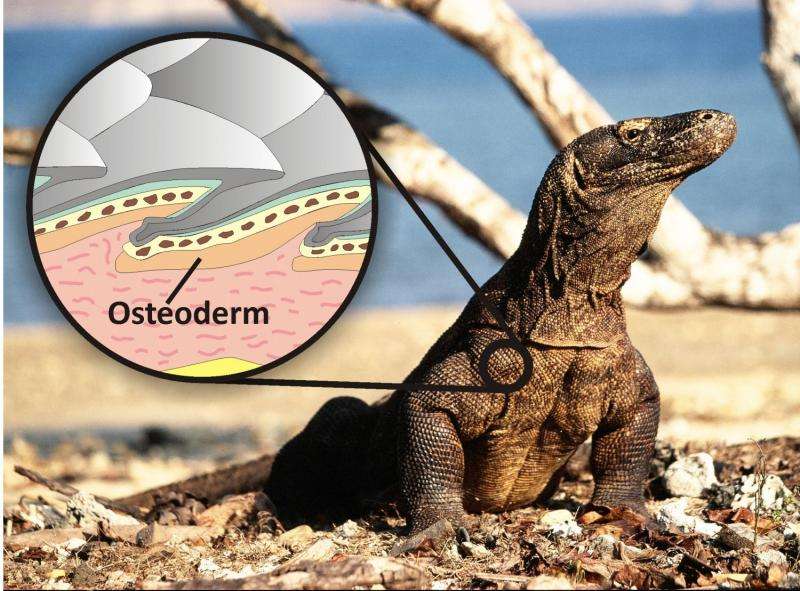Giant killer lizard fossil shines new light on early Australians

As if life wasn't hard enough during the last Ice Age, research led by the University of Queensland has found Australia's first human inhabitants had to contend with giant killer lizards.
UQ vertebrate palaeoecologist Dr Gilbert Price said researchers working in Central Queensland were amazed when they unearthed the first evidence that Australia's early human inhabitants and giant apex predator lizards had overlapped.
"Our jaws dropped when we found a tiny fossil from a giant lizard during a two metre deep excavation in one of the Capricorn Caves, near Rockhampton," Dr Price said.
"The one-centimetre bone, an osteoderm, came from under the lizard's skin and is the youngest record of a giant lizard on the entire continent."
Dr Price and his colleagues used radiocarbon and uranium thorium techniques to date the bone as about 50,000 years old, coinciding with the arrival of Australia's Aboriginal inhabitants.
"We can't tell if the bone is from a Komodo dragon—which once roamed Australia—or an even bigger species like the extinct Megalania monitor lizard, which weighed about 500kg and grew up to six metres long," Dr Price said.
"The find is pretty significant, especially for the timeframe that it dates."

The largest living lizard in Australia today is the perentie, which can grow up to two metres long.
Dr Price, from UQ's School of Earth Sciences, said massive lizards and even nine-metre long inland crocodiles roamed Australia during the last Ice Age in the Pleistocene geological period.
"It's been long-debated whether or not humans or climate change knocked off the giant lizards, alongside the rest of the megafauna," he said.
"Humans can only now be considered as potential drivers of their extinction."
The bone was found in what could be Australia's most fossil-rich site, with the Capricorn Caves housing millions of bones of many species.
Dr Price said scientists could only hypothesise how the giant lizard bone made its way inside the cave, which contains bones of many rodents regurgitated by owls.
He said a crew of volunteer citizen scientists helped with the research by sorting and sieving specimens.
Capricorn Caves manager Ann Augusteyn said the find highlighted her team's "huge responsibility" to care for the caves.
"This study also begs the question—what else is entombed in our caves and what else can we learn?"
The research, in collaboration with the Australian National University, the Queensland Museum and Southern Cross University, was supported by the Capricorn Caves, the Australian Research Council, the Australian Institute for Nuclear Science and Energy and community organisations such as the Ian Potter Foundation.
The research is published in Quaternary Science Reviews.
Journal information: Quaternary Science Reviews
Provided by University of Queensland



















